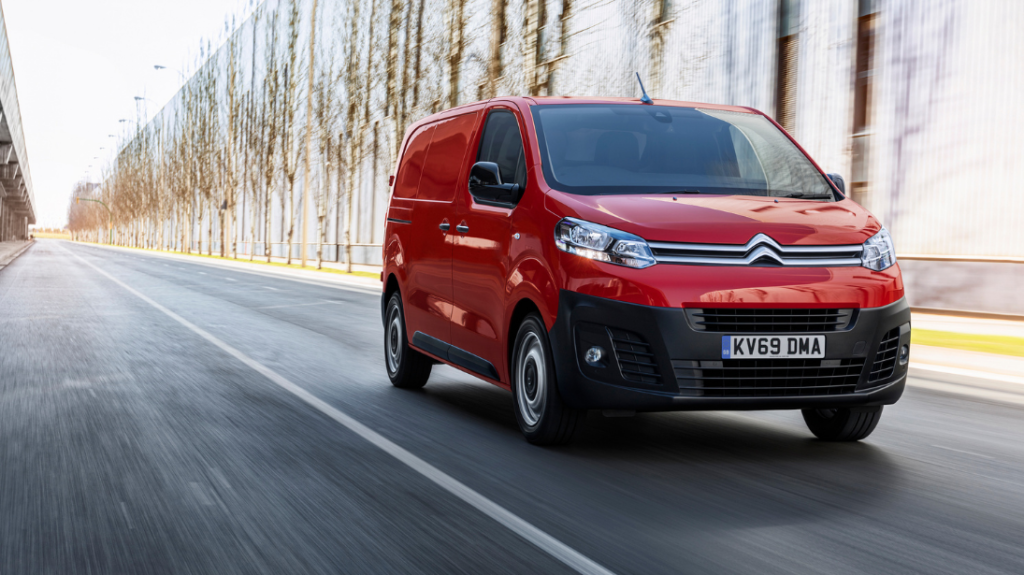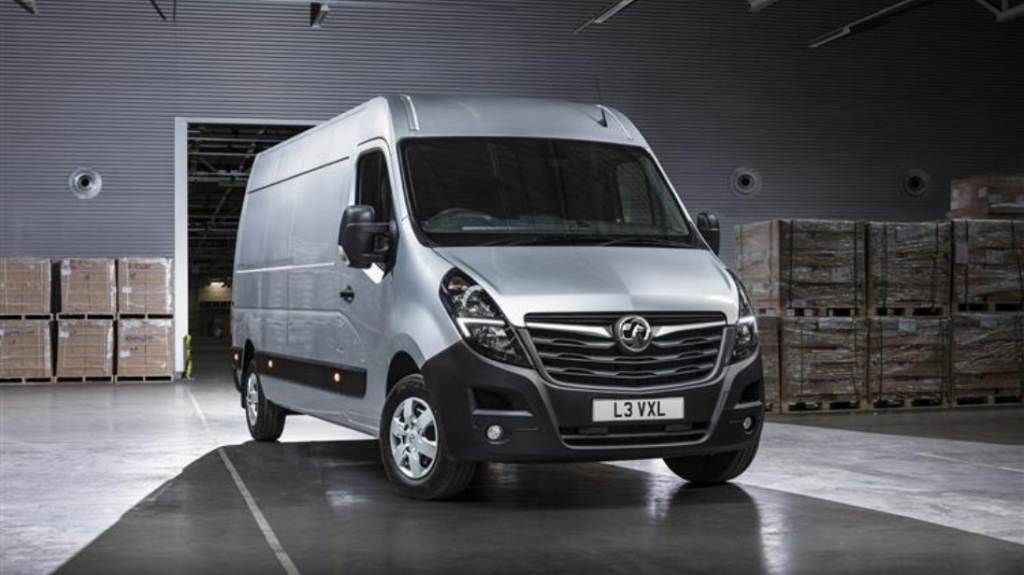
A casual scroll for vans on the internet shows that this hard-working vehicle comes in a variety of packages. And the need for different van types and sizes to be explained is imperative for those searching for the perfect vehicle.
Not only are there plenty of different sizes to choose from, but they also come in several different shapes.
So, there’s plenty of choice. But which van is going to suit your needs? Can you tell your average Luton from your tipper? Do you need a van that’s versatile enough to perform a number of different tasks, or do you need something for just one specific use?
To give you an idea of your options and to help you pick the van that’s right for you, we’ve put together this comprehensive guide on different van types and sizes.

What should I consider when choosing a van?
First and foremost, you need to ask yourself what the van will be used for. With so many different van types and sizes available, you have to be realistic about the vehicle’s usage and function.
Do you need something that’ll be multi-functional? Or is there a specific need your van has to fulfil?
Work through our list of questions to get a clearer picture of the van you need.
What size van do you need?
Knowing what goods you’ll be transporting is one factor you need to consider when picking the size of your van.
Will you also need additional passenger space? Where will you be driving your van – if you’re working in a city, a smaller vehicle will be easier to manoeuvre and park.
How much will your van need to carry?
Picking the right payload is vitally important. Payload is the weight a vehicle can carry in both passengers and cargo. It’s an important question to ask yourself, as overloading your van can be both unsafe, and in some cases, also illegal.
To give you an idea of weights in relation to payload, a standard bag of dry sand weighs 1330kg, a bag of cement is around 25kg, a sheet of MDF is 30kg, a tin of paint is 7kg.
- READ: What are the best electric vans to buy in 2021?
- READ: What is the best used van to buy in 2021?
How much space will you need?
The different van types and sizes also offer a variety of capacity. Once you know the weight of what you’ll be transporting, you’ll also need to figure out the load space you’ll need too.
This is the space in your van that you’ll have available to carry goods.
How frequently and how far will you be travelling?
Fuel economy is a big factor when choosing a van. Short trips in urban areas put different demands on a van than long-distance drives.
If you’re city-based and do shorter journeys, an electric van can really slash costs. Heavier loads with longer journeys will be better suited with diesel or petrol models.
If you’re travelling long distances, don’t forget to consider the comfort of the van too. From air conditioning to cruise control, these are the additional features that can make your job easier.
Where will you be working?
Ease of access to the load in your van is also something to think of. For example, if you’re working in narrow city streets, would dual sliding doors be helpful?
Will parking be tight? If so, a smaller van might be better.
What are the different types of van?
Now you have a better idea of what you need the van for, let’s take a look at the different types of vans available – from seating to payloads and fuel consumption to access.
Micro van/car-derived vans

Micro vans or car-derived vans are essentially vehicles that were born to be cars but were then properly adapted to be commercial vehicles.
Instead of traditional side rear windows, you’ll find metal panels or fixed opaque glass windows.
And instead of rear seats, it has a fixed payload area with a floor. You’ll also often find them with a bulkhead between the loading area and front seats to separate the cabin.
So it looks like a van, does the work of a van, but really drives like a car. This means they’re subject to the same speed limits as passenger vehicles too.
But as they’re designed to carry a maximum weight of 2.0 tonnes when fully loaded, they’re a functional, safer way to carry more goods and equipment than an ordinary car.
Examples of micro vans include:
- Ford Fiesta Van
- Vauxhall Corsavan
- Ford Courier
- Average load length – 1.3m
- Average load height – 1.1m
- Average load width – 1.0m
- Payload: 581kg – 660kg
- Seats: 2 (including driver)
- Typical fuel consumption: 40-50mpg
Small vans

Small vans are great if you’re looking for something versatile. If you don’t need to carry large loads, they’re practical, cheap to insure and often good value to run.
They’re equally at home nipping around town and venturing further afield.
They’re also deceptively spacious. Long enough to carry appliances, luggage, and parcels, they’re also secure, with your goods out of sight.
Examples of small vans include:
- Ford Connect
- Vauxhall Combo
- Fiat Doblo
- Average load length – 1.7m
- Average load height – 1.2m
- Average load width – 1.5m
- Payload: 500 – 900kg
- Seats: 2 (including driver)
- Typical fuel consumption: 40-50mpg
Medium vans

A medium van is one of the most popular choices in the UK. It’s big and sturdy enough to deal with a variety of uses, but it’s not much longer or wider than a large car, making it easy to manoeuvre and park.
It’s a happy blend of space and performance – the perfect solution for transporting large goods like sofas or holding bulky tools and merchandise.
Examples of medium vans include:
- Average load length – 2.4m
- Average load height – 1.5m
- Average load width – 1.7m
- Payload: 900 – 1200kg
- Seats: 3 (including driver)
- Typical fuel consumption: 30-40mpg
Large vans

A large van pretty much does what it says on the tin. They’re built with load capacity in mind, so highly practical for goods delivery or house removals.
They come in many different guises – short or long wheelbase with varying capacities too, so you can typically find one that meets your exact needs.
With a side loading door, they also make for easy loading and unloading.
Examples of large vans include:
- Average load length – 3.4m
- Average load height – 1.7m
- Average load width – 1.7m
- Payload: 1,200 – 1,500kg
- Seats: 3 (including driver)
- Typical fuel consumption: 30-35mpg
Crew van/Minibus

Ideal for transporting both people and cargo in comfort, the crew van includes stowable seats to boost your load space further.
These vans are geared more towards passengers than goods, but medium and large vans can all be converted to fit more seats; meaning there’s still enough room to carry ample equipment if needed in the boot or by utilising the seat space.
Examples of crew vans include:
- Average load length – 1.5m
- Average load height – 1.2m
- Average load width – 1.4m
- Payload: 500-600kg
- Seats: 6 – 8 (including driver)
- Typical fuel consumption: 50-60mpg
Pick-up trucks

Modern pick-ups are multi-functional vehicles that have become increasingly popular with families over the years.
They fulfil the needs of those who carry and tow heavy loads such as caravans, tackle every terrain, and provide car-like comfort at the same time.
They’re popular with businesses, as – when they have a payload of at least one tonne and are classed as Light Commercial Vehicles – users can reduce their Benefit-in-Kind tax.
Examples of pick-up trucks include:
- Average load length – 1.5m
- Average load height – 511m
- Average load width – 1.5m
- Payload: 1,000 – 1,500kg
- Seats: 5 (double cab, including driver)
- Typical fuel consumption: 32-40mpg
Tipper/Dropside van

A tipper or dropside van is more of a vehicle for specific use. Useful for carrying loose items – sand, cement, soil, branches, scrap, and so on.
As the name suggests, tipper vans have a flatbed with a tipping function, which makes substances or items easier to remove.
Dropsides are also easier to access, but rather than tip, the sideboards can be folded down giving you direct access to the load area.
With a very spacious load capacity, they easily transport more awkward loads and are popular in construction and landscaping industries.
They’re available in single or crew cab, meaning you can actually carry up to six passengers too.
Examples of tipper/dropside vans include:
- Average load length – 3m
- Average load height – 1.2m
- Average load width – 2m
- Payload: 1,500kg
- Seats: 6 (including driver with a double cab)
- Typical fuel consumption: 20 – 30mpg
Luton Van

The Luton Van is the giant of the van family. With a long wheelbase, they’re ideal for large, heavy loads.
With an enclosed boxed body that extends over the cab, giving additional storage space, they have a high volume capacity.
Typically, they have hydraulic tail lifts making the loading and unloading of heavy, bulky goods easier.
Examples of Luton Vans include:
- Average load length – 4m
- Average load height – 2.2m
- Average load width – 2m
- Payload: 1,200 – 1,600kg
- Seats: 3 (including driver)
- Typical fuel consumption: 35-40mpg
Different van types and sizes: find the right one for you
Still not sure on which van is right for you or have outstanding questions? We can help.
Speak to one of our specialist team members who can answer all your questions and help to find the right van for you.













